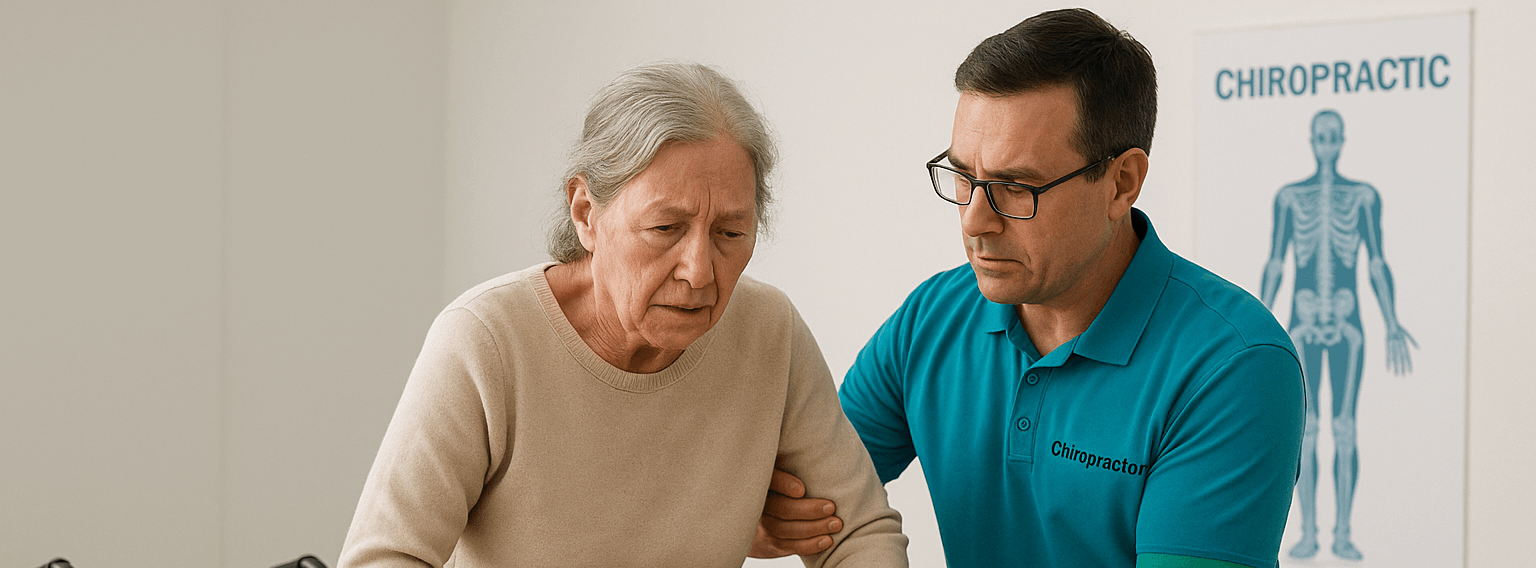Slouched shoulders, stiff necks, chronic fatigue—poor posture is no longer just a bad habit, it’s a full-blown modern health crisis. In our hyper-connected, screen-heavy world, more people are turning to fast solutions like braces, apps, and quick adjustments.
But here’s the hard truth: quick fixes can’t correct structural dysfunction. They might ease tension or “make you sit up straight,” but they rarely solve the core problem. Real, lasting posture change requires something deeper—structured correction through therapy.
This guide breaks down the difference between surface-level solutions and true posture correction therapy, and explains why methods like Advanced BioStructural Correction™ (ABC™) are transforming how we approach alignment and spinal health.
Jump To:
TLDR – Quick Guide
- Quick fixes (braces, taping, basic stretches) bring short-term relief but don’t address deeper misalignments
- Posture correction therapy works at the root level—realigning bones, joints, and nervous system function
- Therapy creates lasting change through progressive structural unwinding
- Results include better posture, reduced pain, more energy, and improved movement
- For long-term wellness, posture correction therapy is the sustainable solution
What Are Quick Fixes?
Quick fixes are appealing because they’re easy and fast. Common examples include:
- Posture braces or taping – which force the body into an upright position
- Stretch routines or posture apps – that provide gentle reminders
- One-off spinal adjustments – often performed without a full postural assessment
Why They Seem Helpful
- Provide instant visual improvement
- May reduce discomfort for a few hours
- Easy to integrate into busy lifestyles
The Problem?
These approaches don’t address why the posture broke down in the first place. Once the brace comes off or the reminder ends, your body slips right back into its old habits—because the underlying structure hasn’t changed.
What Is Posture Correction Therapy?
Posture correction therapy is a systematic, full-body approach to restoring natural alignment. At Upright Posture, we use Advanced BioStructural Correction (ABC™)—a method that identifies the specific bones your body cannot correct on its own.
What Makes It Effective?
- Works on true structural dysfunction, not just symptoms
- Triggers the unwinding process—gradually releasing layers of postural compensation
- Improves spinal alignment, joint movement, and nervous system flow
- Helps your body hold posture naturally—no devices or reminders needed
This is posture correction from the inside out, not the outside in.
The Long-Term Benefits of Posture Correction Therapy
Correcting posture at the structural level sets off a ripple effect of wellness benefits across the body:
1. Reduced Pain
- Long-term relief from back, neck, and shoulder pain
- Less pressure on discs, joints, and nerves
2. Better Natural Posture
- You won’t need to “remember” to sit up straight—it just happens
- The body holds itself upright without effort or discomfort
3. Enhanced Nervous System Function
- Clearer communication between brain and body
- Supports improved focus, energy, and emotional balance
4. Greater Mobility & Flexibility
- With fewer restrictions and more balanced movement patterns, injuries become less likely
- Everyday tasks feel easier and more fluid
5. Functional Breathing and Digestion
- Upright alignment gives organs space to function efficiently
- Many patients report improved breathing and less bloating
Unlike braces or short-lived adjustments, these results build and stick—even when you’re no longer in active treatment.
Why Quick Fixes Often Fail
It’s easy to fall for the appeal of fast results. But here’s why they usually disappoint:
They Treat Symptoms, Not Causes
Braces and adjustments may relieve discomfort—but they don’t correct the skeletal misalignments causing the issue.
They Can Create Dependency
Overuse of external supports weakens postural muscles and makes your body less able to support itself.
They Ignore Compensations
Your body builds years of bad movement patterns. Stretching your hamstrings won’t solve a misaligned pelvis or a forward-tilting ribcage.
The result? You’re stuck in a cycle of temporary relief—without real progress.
Why Posture Correction Therapy Works
The biggest difference? Posture correction therapy frees your body to correct itself.
By identifying and correcting the specific bones your body can’t fix on its own, techniques like ABC™ create a chain reaction of improvement—freeing the spine, reducing compensation, and triggering the body’s natural self-healing capacity.
Over time, this therapy leads to:
- Progressive structural changes
- More balanced movement
- Better load distribution across the body
- A healthier, more sustainable posture
This isn’t about being forced into position—it’s about letting your body remember how to move and hold itself correctly.
Key Takeaways
- Quick fixes may offer short-term relief but often lead to long-term frustration
- Posture correction therapy targets the root of the issue—correcting misalignments the body can’t resolve on its own
- Benefits go beyond posture: pain relief, nervous system support, mobility, and energy all improve
- Long-term results come from the unwinding process, not repetitive patchwork solutions
- For sustainable posture correction, therapy always outperforms temporary fixes
FAQs
Can posture correction therapy help even if I’ve used braces or tried other fixes before?
Yes. In fact, many patients come to posture correction therapy after trying braces, posture apps, or one-off adjustments without lasting success. Therapy like Advanced BioStructural Correction (ABC™) is designed to correct what other methods can’t—structural misalignments your body can’t fix on its own.
Is posture correction therapy time-consuming?
Not at all. While it’s not a one-and-done solution, most sessions are brief (15–30 minutes) and fit easily into your schedule. Plus, the results are cumulative—so each session builds on the last, making your time investment count long-term.
Will I still need to stretch or exercise if I do posture correction therapy?
Stretching and movement are great, but they’re most effective after structural alignment is restored. Posture correction therapy ensures your body is properly aligned so that movement patterns, strength work, and flexibility training can be more effective—and less injury-prone.
Does everyone go through the same unwinding process?
No two bodies are the same. The unwinding process is unique for each person, depending on their posture history, injuries, and lifestyle. Your care plan will be adapted to your body’s needs and progress at a pace that supports safe, lasting correction.
How can I tell if a posture correction method is just a quick fix?
Watch for red flags like:
- No initial structural assessment
- Instant results promised without long-term planning
- Overreliance on braces or external support
- Lack of explanation about how alignment is being corrected
A reputable posture clinic will focus on educating you, assessing thoroughly, and building a custom plan for long-term correction, not just fast relief.
Disclaimer
At Upright Posture, we don’t rely on generic adjustments or gimmicks. We specialise in Advanced BioStructural Correction (ABC™)—a powerful, posture-first method designed to create lasting structural change.
We don’t just want you to feel better today. We want you to move better, live better, and stay better for the long haul. If you’re ready to break free from the cycle of temporary relief, our approach offers a clear path to real, long-term alignment.






